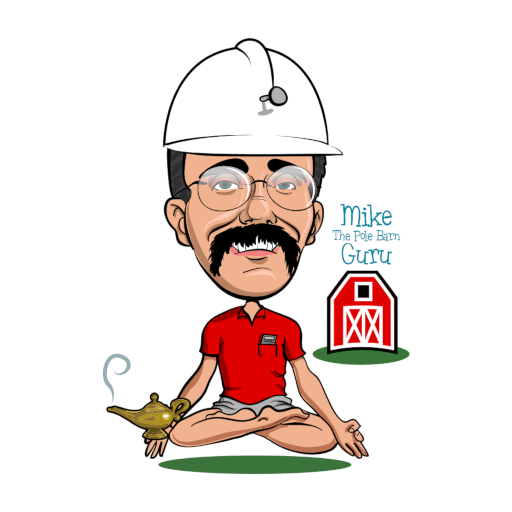If I had a nickel for every request for quote we have received for horse stalls barns with 8’ eave heights, I could not only buy a horse, I could pay to feed it!
According to the United States Department of Agriculture (USDA), a horse can be up to eight feet tall when standing on all four legs and close to 12 feet tall when rearing.
The best design for stall barns has columns and trusses (or preferably rafters) spaced every 12 feet along the length of the building. This design allows for 12’ width stalls to be located with the partitions between each stall aligned with the roof support system.
 With the columns and trusses properly aligned in stall barns, the head room above the stalls increases with the slope of the roof. In most cases, a 10 foot high eave is considered to be acceptable, however a 12 foot eave would insure no rearing horse would hit its head on the roof system. Besides preventing horses from hitting their heads, adequate headroom needs to be provided in horse barn kits to keep horses from chewing on the roof trusses or rafters.
With the columns and trusses properly aligned in stall barns, the head room above the stalls increases with the slope of the roof. In most cases, a 10 foot high eave is considered to be acceptable, however a 12 foot eave would insure no rearing horse would hit its head on the roof system. Besides preventing horses from hitting their heads, adequate headroom needs to be provided in horse barn kits to keep horses from chewing on the roof trusses or rafters.
Proper headroom in aisleway areas is also a consideration, especially as horses are prone to rear when not adequately cross tied. Here, the use of roof trusses can severely impact available headroom.
Often, barn owners will want to locate hay lofts above horse stalls. In an effort to reduce overall building costs, the height of the loft above stalls will too frequently be slighted. Even if you acquired your horses for free, you have made an investment in them over time which will be more expensive than the added to cost to design your stall barn right. Building height is not a place to be penny wise and pound foolish.






